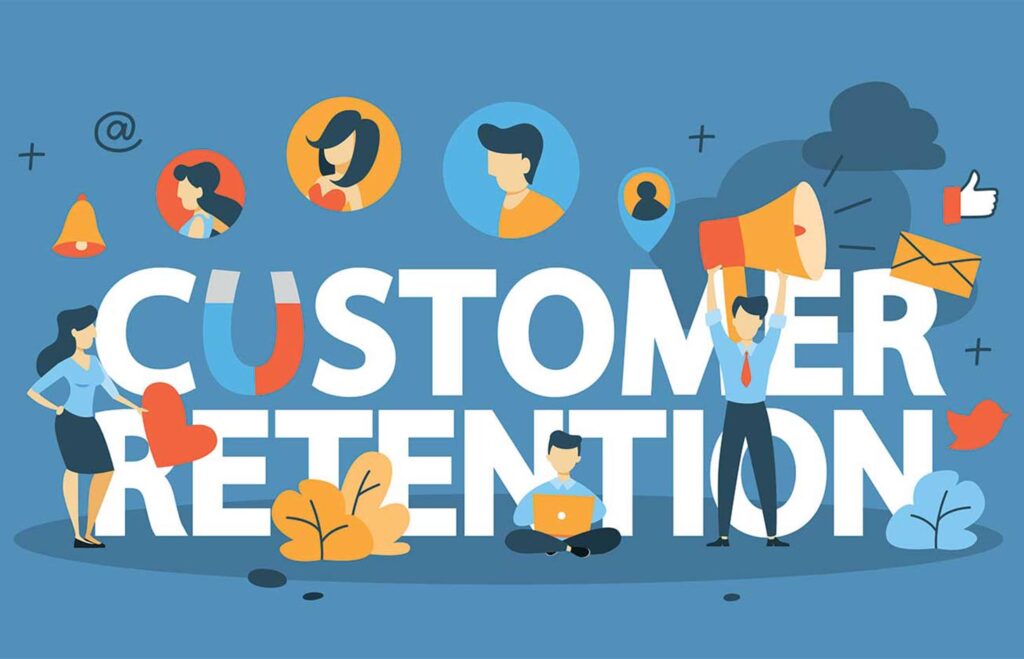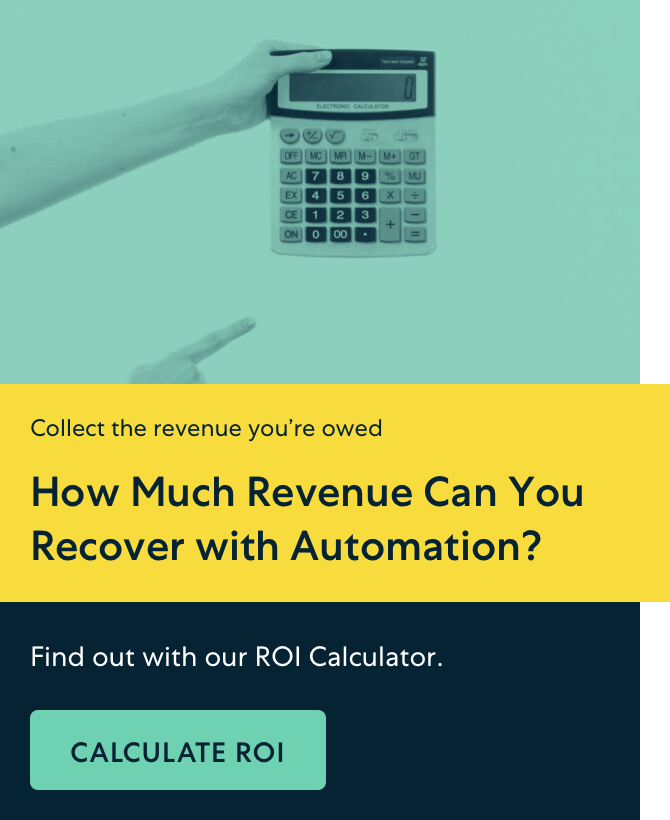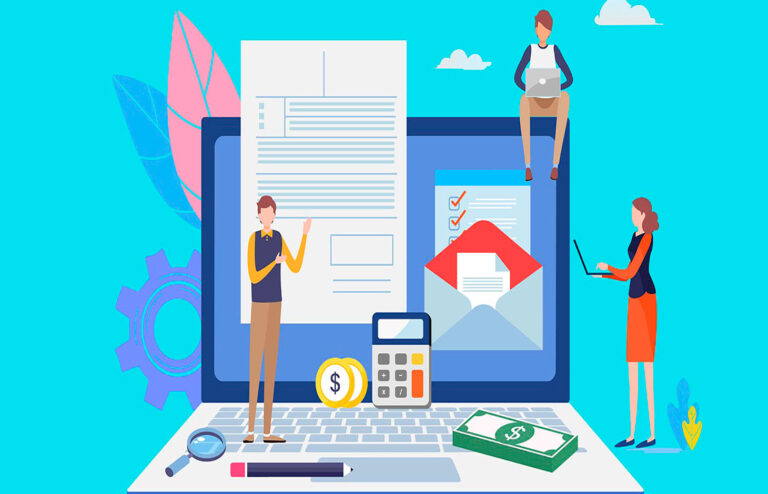SaaS (Software as a Service) and other subscription-based businesses rely on monthly recurring revenue (MRR) from existing customers to monetize and enhance their product. Often, “revenue growth” is seen as only achievable through new customer acquisition, but this isn’t the case.
Expansion MRR is new revenue from existing customers when they upgrade their subscription plans. Your business likely puts a lot of effort into new customer acquisition and onboarding; expansion MRR is attractive because it generates revenue from current users who have already been onboarded. It’s essentially a low- or no-expense path to increased MRR.
Customer acquisition is expensive; upgrading existing customers typically is not.
That’s not all: When done right, expansion MRR can lead to “negative churn”—a phenomenon that reverses leaking revenue from customers who downgrade or cancel their subscription.
What is Negative Churn?
Churn happens; every SaaS business knows that. Customers downgrade their plans or leave entirely for a variety of reasons. And while you can make efforts to reduce churn, you can never guarantee that every customer will stay subscribed indefinitely.
The rule of thumb in the subscription industry is that an annual churn rate of 5%-10% is manageable. But what if you want to do more than just “manage”? What if you want to thrive?
In order to do that, you need to get your churn rate as close to 0% as possible, or even better, get it into negative rates—known as negative churn.
Sound impossible? It’s not. In a 2018 Analyst & Investor Day article, Wix President and COO Nir Zohar explained how Wix achieved a 104% retention rate in one of their cohorts over the course of four years, using expansion MRR to harness the power of negative churn.
With negative churn, expansion MRR replaces and surpasses revenue lost to customers who downgrade or unsubscribe. It means that existing subscribers are generating more revenue than churning customers cost; their upgrade rate outpaces the business’s churn rate.
While this holy grail phenomenon doesn’t mean you can completely give up on acquisition, it does mean that instead of racing to replace churned customers with new ones, your business can harvest revenue from existing accounts to not just replace but even surpass existing MRR. This graph from David Skok, an accomplished serial entrepreneur and venture capitalist, illustrates the concept:
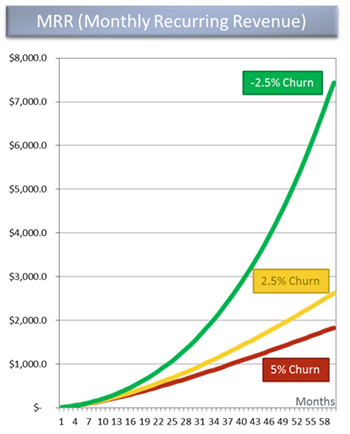
Ready to unlock success through expansion MRR? Read on.
1. Put Effort Into Upselling for Expansion MRR
Upselling may have a bad reputation as a sales approach, but there are ways to do it without being pushy. There’s nothing wrong with gently suggesting upgrades that benefit your customers and provide value, especially when well-timed.
Existing customers are already paying for your service, so they see its value.
The probability of selling to an existing customer is 60-70%, while the probability of selling to a new prospect is 5-20%
Take advantage of those odds. Focus on upselling satisfied customers who would find an upgrade advantageous. Look for users who consistently max out their allocated usage every month, or those who often reach out to customer support with problems that could be easily avoided by moving up to a higher tier.
It shouldn’t be too difficult to convince people who are already spending $50 a month on your great service to upgrade to a $70 a month plan with even more of what they want or need. Providing this added value creates $20 a month in expansion revenue from every customer who upgrades.
Multiply that by the number of months your average customer sticks around, and you’ll see the impact on customer lifetime value and move your business toward negative churn.
As you scale your subscription-based business, it may be a good idea to appoint a dedicated customer success manager that focuses on expansion MRR.
2. Explore Negative Churn Potential with Promotions or Discounts to Upgrading
You can also make upgrades attractive through promotions or discounts. For instance, offer the upgraded version of your service with a temporary discount or even at no extra charge for the first month so users can test it out.
You’re probably familiar with the success of free trials in subscription businesses; why stop once your customers are already signed on? Give users a taste of advanced features at no extra cost and watch upgrades, and expansion MRR, climb.
While a LinkedIn Premium plan costs $29.99 per month, existing free users of the site are encouraged to try Premium for free for one month:

The trial month allows users to explore the added benefits a premium account offers. If those benefits prove attractive enough to users, the odds that they’ll convert to a paid account rise. Customers want to know that they’ll get their money’s worth; with a premium trial period, they’ll know exactly what they’re getting.
Remember that this isn’t about convincing your customers to pay for something they don’t need. Provide value, and those who want it will pay for it.
3. Make Upgrading an Obvious and Easy Decision
Are your users aware of the option to upgrade at any time? And if so, how easy is the process?
Simply having a visible “upgrade” button might be all it takes. Automated upgrade processes can streamline the user experience and are easily handled with a robust subscription management platform.
A prompt that appears when users try to access advanced features can also do the trick. Make buttons to advanced features visible, so that when interested users click them, a message indicates that an upgrade is necessary to use the feature.
WordPress.com does this to great effect, allowing ‘personal’ and ‘premium’ users to click the “Manage Plugins” button. They even show available plugins, while informing the user that a ‘business’ plan is required to actually install them. Clicking on the message redirects users to an upgrade page detailing the added features available in a business plan.
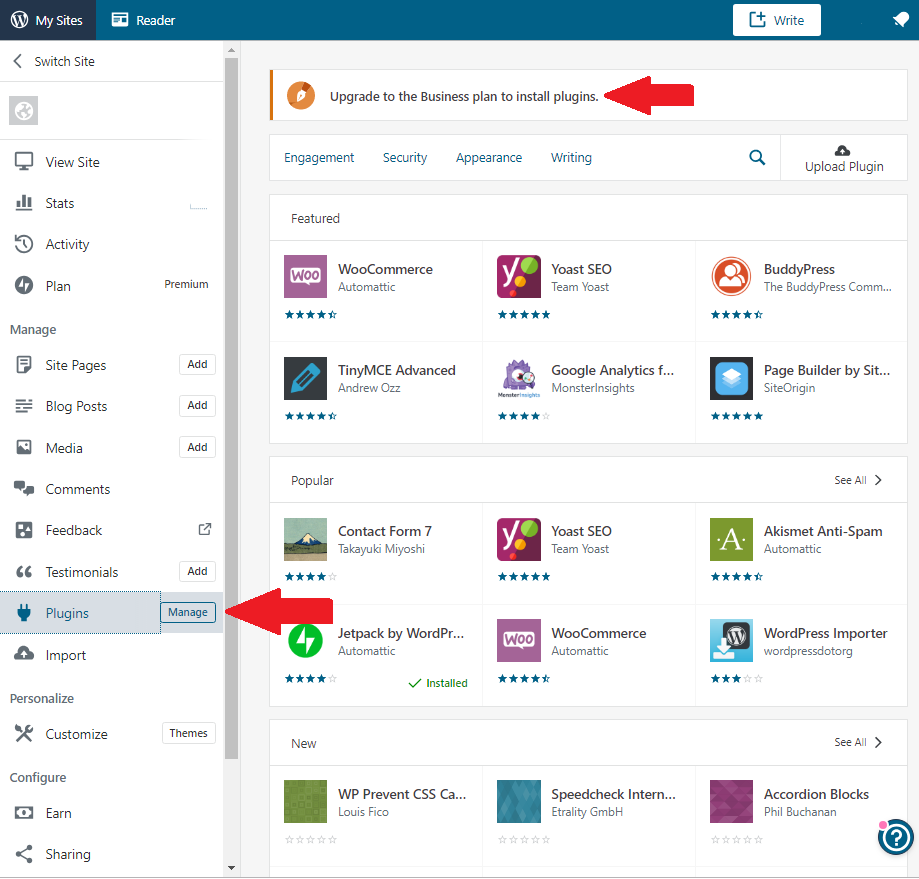
4. Add New Premium Account Features You Know Customers Want
Your management tools and customer support team are probably bursting with customer feedback and data. This should inform your development team!
Not only is meeting consumer demand important to remain relevant, it is also an opportunity to increase expansion MRR. While some updates to your product are necessary to stay competitive, others might be considered “premium” features worth a little extra cost.
Harness the power of customer feedback to give users what they want and need. Whether increased automation or an exciting new feature, making it available in a higher-priced tier encourages existing customers to upgrade—your next big step toward negative churn.
Of course, it’s important to make sure you add value for users, rather than take it away from free or basic users. Taking away features that should be available in all tiers and putting them behind a higher paywall is more likely to leave a bad impression and result in churn (the bad kind) than upgrades.
5. Rethink Your “Ideal Customer”
Many businesses start out with a product-centric, “we offer something everybody can use” mentality, generally attracting lower-paying customers with highly accessible pricing.
But if your product offers much-needed solutions to problems that higher-paying customers have, you may be undervaluing your business.
Reassess your offerings, determine the customer profile that best matches your business, and revalue your product accordingly.
You may lose lower-paying, “bad fit” customers, but they will be replaced with good fit, higher-paying customers who are much easier to upsell on upgrades.
If losing customers isn’t acceptable based on your margins, Close.io shared the method they used when they decided to raise prices. Their approach kept current customers happy, conversion rates high, and turned the price increase into an opportunity to make more sales.
6. Enable Adoption of Your Product Across Businesses
If you operate in the B2B environment, this one’s for you.
While all the MRR-increasing methods above are adaptable for various industries, SaaS businesses that provide a product for other businesses have an additional and unique avenue available. When using your product translates to increased revenue for your customer, upselling interdepartmental integration should be an obvious next step to ensure their (and your) growth.
Maximize this opportunity by making your product indispensable across the board for the businesses you work with. Develop and offer features which solve multiple problems growing enterprises experience.
It can be easy to forget that Google was once only a search engine. Today, any user can enjoy Google’s email, calendar, document, cloud storage, and various other services for free.
However, businesses that want increased cloud storage, secure messaging, and customized domain emails have to pay $5 a month for a basic G Suite account.
Need an app development environment and advanced security and administration controls? Better upgrade to a business account.
An enterprise account adds even more security and data features, attractive to growing businesses in need. Meeting so many different demands ensures that G Suite users are likely to upgrade as they grow.
7. Consider Cross-sells and Add-ons
Expansion MRR is generally achieved when users upgrade their plans, but there are opportunities to harvest revenue in other ways.
For example, charging one-time fees for data reports or add-ons won’t create recurring revenue from individual users, but as your overall customer base takes advantage of these offerings, a small amount of MRR is generated and could be considered expansion revenue. For example, HP now uses an ink subscription service that includes additional one-time payments for extra printer ink cartridges as needed.
If it fits your needs, don’t rule out opportunities to use hybrid billing strategies like this to help your business achieve negative churn.
While managing one-time payments in addition to your subscription plans can sound intimidating, it shouldn’t hold you back. A comprehensive subscription billing platform like Stax Bill can handle your hybrid billing needs with ease.
As technology advances and businesses find new ways to maximize revenue from existing customers, these methods will evolve. With recurring revenue so essential to product development and meeting customer needs, it’s important to make the most of the resources available to you.
Your existing customers are both your most valuable resource and your key to unlocking expansion MRR and achieving negative churn. Meet their needs, and they’ll meet yours.
Quick FAQs about Expansion MRR
Q: What is Expansion MRR?
Expansion MRR is the additional revenue generated when existing customers upgrade their subscription plans. It’s a cost-effective way for subscription-based businesses to increase their monthly recurring revenue (MRR) as it leverages current users who have already been onboarded.
Q: How does Expansion MRR contribute to achieving negative churn?
When managed correctly, expansion MRR can lead to negative churn. Negative churn happens when the revenue gained from upgraded subscriptions surpasses the revenue lost from customers who downgrade or cancel their subscriptions. This implies that existing customers are producing more revenue than the cost incurred by churning customers.
Q: Why is a dedicated customer success manager necessary for scaling a subscription-based business?
A dedicated customer success manager can focus on expansion MRR by identifying customers suitable for upgrading and implementing effective upselling strategies. A customer success manager can also make upgrades attractive through promotions or discounts, further promoting expansion MRR.
Q: How can businesses make the process of upgrading easy for users?
Businesses can make the upgrading process easy by integrating an automated upgrade process, including visible “upgrade” buttons or prompts that appear when users try to access advanced features. This strategy streamlines the user experience and encourages upgrading, thereby promoting expansion MRR.
Q: How can customer feedback be used to increase expansion MRR?
Customer feedback can be used to enhance the product and introduce new features that meet consumer demand. Offering these additional features in a higher-priced tier encourages existing customers to upgrade their subscriptions, contributing to expansion MRR.
Q: How can reassessing offerings and revaluing products help in increasing expansion MRR?
By reassessing offerings and revaluing products, businesses can attract higher-paying customers who are a better fit for their services. These customers are easier to upsell on upgrades, thereby increasing expansion MRR.
Q: How can interdepartmental integration be beneficial for B2B businesses in increasing expansion MRR?
In a B2B environment, interdepartmental integration can be a powerful strategy for increasing expansion MRR. When a product becomes indispensable across multiple departments in a business, it increases the chances of the entire business upgrading their subscription, leading to a significant boost in expansion MRR.
Q: Can one-time fees contribute to expansion MRR?
Yes, one-time fees for data reports or add-ons can contribute to expansion MRR. Although they don’t create recurring revenue from individual users, as the overall customer base takes advantage of these offerings, a small amount of MRR is generated, contributing to expansion revenue.
Q: How can technology advancements contribute to maximizing revenue from existing customers?
As technology advances, businesses can find new ways to maximize revenue from existing customers. These methods will evolve with recurring revenue being essential to product development and meeting customer needs. For instance, a comprehensive subscription billing platform can manage hybrid billing needs, contributing to achieving negative churn.
Q: How can businesses unlock success through expansion MRR?
Businesses can unlock success through expansion MRR by focusing on upselling strategies, making the upgrading process easy, leveraging customer feedback, reassessing offerings, and utilizing technology advancements. All these strategies aim to meet the needs of existing customers and encourage them to upgrade their subscriptions, thereby increasing expansion MRR and achieving negative churn.
